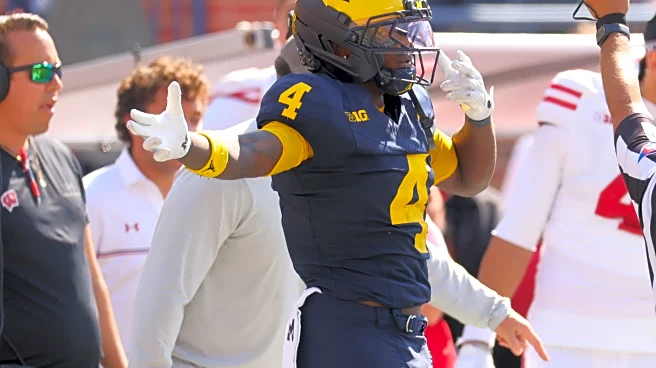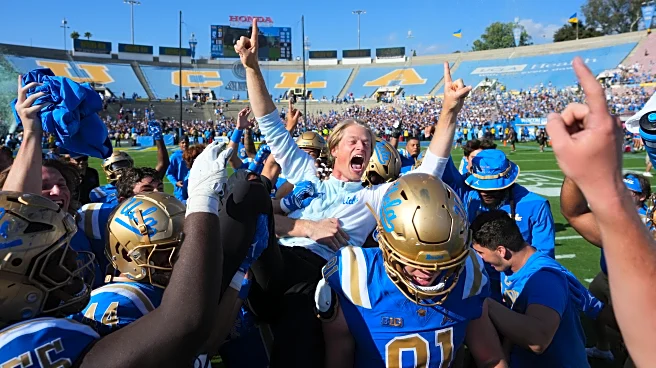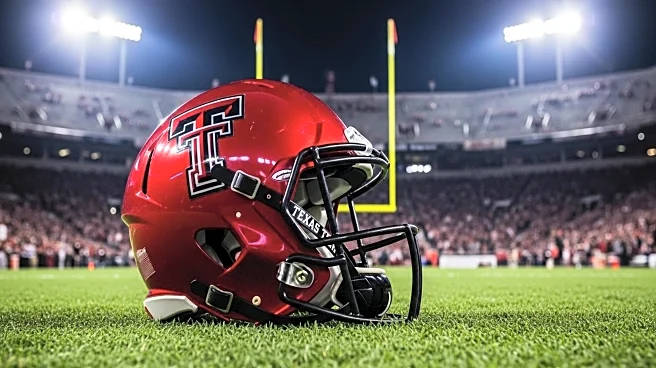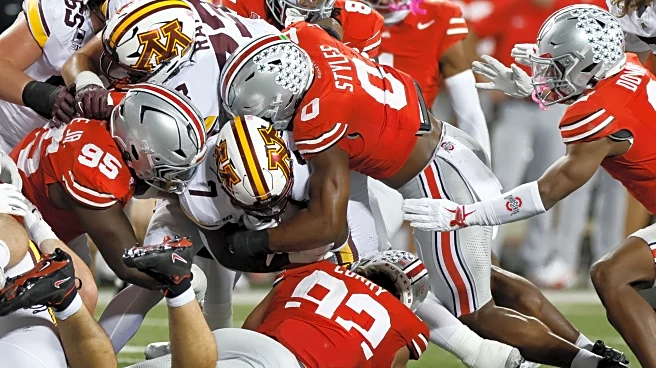What's Happening?
The Texas Tech Red Raiders football team has climbed to the No. 9 spot in the NCAA Top 25 rankings following a decisive 35-11 victory over previously unbeaten Houston. This marks the team's highest ranking since 2008. Running back J’Koby Williams played a pivotal role in the win, contributing significantly to the team's success. The Red Raiders' performance has been a highlight in the college football season, as they maintain a perfect 5-0 record. The recent AP poll also saw significant shifts, with Miami moving to No. 2, surpassing Oregon, and both Texas and Penn State dropping out of the Top 25 after losses to unranked teams.
Why It's Important?
Texas Tech's rise in the rankings is significant for the college football landscape, as it highlights the team's resurgence and potential to compete at a high level. This achievement could enhance the program's visibility and attract more talent and support. The fall of traditional powerhouses like Texas and Penn State from the rankings underscores the unpredictable nature of the season and the shifting dynamics in college football. For Texas Tech, maintaining this momentum could lead to opportunities in major bowl games and increased national recognition.
What's Next?
Texas Tech will aim to sustain its winning streak and secure its position in the Top 10. The team's upcoming games will be crucial in determining their standing and potential playoff implications. Meanwhile, teams like Texas and Penn State will need to regroup and strategize to re-enter the rankings. The broader college football community will be watching closely to see if Texas Tech can continue its impressive performance and how the rankings will evolve as the season progresses.
Beyond the Headlines
The rise of Texas Tech in the rankings could have long-term implications for the Big 12 conference, potentially altering recruiting dynamics and media attention. The team's success may also inspire other programs to invest in their football operations, aiming for similar achievements. Additionally, the shifts in the AP poll reflect broader trends in college football, where traditional powerhouses are being challenged by emerging teams, indicating a more competitive and diverse landscape.












